How Does the End Launch Waveguide to Microstrip Adapter Enable Flexible Integration Across Platforms?
In today's rapidly evolving microwave and millimeter-wave communication landscape, seamless signal transmission across diverse platforms represents a critical challenge for engineers and system designers. The End Launch Waveguide to Microstrip Adapter emerges as a transformative solution, bridging the gap between traditional waveguide systems and modern microstrip technologies. This sophisticated component enables unprecedented flexibility in system integration by providing a reliable transition mechanism that maintains signal integrity while accommodating various transmission line configurations. As industries demand increasingly complex communication architectures spanning satellite communications, aerospace defense systems, and advanced radar applications, the End Launch Waveguide to Microstrip Adapter serves as the essential link that ensures optimal performance across heterogeneous platforms, delivering exceptional electrical characteristics and mechanical reliability that modern high-frequency applications require.
Seamless Signal Transition Technology
Advanced Impedance Matching Mechanisms
The End Launch Waveguide to Microstrip Adapter incorporates sophisticated impedance matching technology that ensures minimal signal reflection and maximum power transfer between waveguide and microstrip transmission lines. This critical functionality relies on precisely engineered transition geometries that gradually transform the field distribution from the rectangular waveguide mode to the quasi-TEM mode characteristic of microstrip lines. The adapter's internal structure features carefully calculated dimensional tapering that maintains consistent impedance throughout the transition region, effectively eliminating discontinuities that could cause signal degradation. Advanced Microwave Technologies' design methodology employs electromagnetic simulation tools to optimize these transitions, ensuring that the End Launch Waveguide to Microstrip Adapter achieves exceptional return loss characteristics across its entire operating bandwidth. The impedance matching performance directly impacts system efficiency, with properly designed adapters achieving return loss values better than 20 dB across most of their operational frequency range, translating to less than 1% reflected power and maximum signal transmission to downstream components.
Electromagnetic Field Transformation Principles
The fundamental operation of the End Launch Waveguide to Microstrip Adapter relies on controlled electromagnetic field transformation that preserves signal integrity during the transition between different transmission media. Waveguides support TE and TM propagation modes with field patterns confined within metallic boundaries, while microstrip lines support quasi-TEM modes with field distributions partly in air and partly in dielectric substrates. The adapter's sophisticated internal geometry facilitates this mode conversion through carefully designed field transformation regions that gradually modify the boundary conditions. This process requires precise control of the electric and field magnetic distributions to prevent mode conversion losses and unwanted spurious modes that could degrade system performance. The End Launch Waveguide to Microstrip Adapter achieves this through optimized probe positioning, dielectric loading strategies, and transition geometry that ensures smooth field evolution. Advanced computational electromagnetics modeling enables engineers to predict and optimize these field transformations, resulting in adapters that maintain excellent signal fidelity across wide frequency ranges while supporting high power handling capabilities essential for demanding applications.
Multi-Frequency Performance Optimization
Modern communication systems operate across increasingly wide frequency ranges, necessitating End Launch Waveguide to Microstrip Adapter designs that maintain consistent performance across broad bandwidths. The challenge lies in creating transition structures that accommodate the frequency-dependent characteristics of both waveguide and microstrip propagation while maintaining low insertion loss and excellent return loss performance. Advanced design techniques employ multi-section matching networks within the adapter structure, utilizing stepped impedance transformers and optimized probe geometries that provide consistent performance across the entire operational bandwidth. The End Launch Waveguide to Microstrip Adapter from Advanced Microwave Technologies supports frequencies up to 110 GHz, covering applications from traditional microwave communications through millimeter-wave radar and emerging 5G/6G wireless systems. This wide frequency coverage requires sophisticated design approaches that account for dispersive effects, material properties variations, and manufacturing tolerances. The resulting adapters demonstrate exceptional broadband performance with typical insertion loss values less than 0.5 dB and return loss better than 15 dB across their specified frequency ranges, enabling system designers to implement flexible architectures without compromising signal quality.
Platform Compatibility and Integration Solutions
Versatile Mechanical Interface Designs
The mechanical design of End Launch Waveguide to Microstrip Adapters plays a crucial role in enabling flexible integration across diverse platform architectures. These adapters must accommodate various waveguide flange standards, including WR-series rectangular waveguides, while providing secure connections to printed circuit boards and microstrip assemblies. Advanced mechanical engineering ensures robust physical interfaces that maintain electrical performance under demanding environmental conditions including temperature cycling, vibration, and mechanical stress. The End Launch Waveguide to Microstrip Adapter incorporates precision-machined metallic housings with optimized thermal expansion characteristics that maintain dimensional stability across wide temperature ranges. Mounting configurations include both vertical and horizontal orientations, with customizable flange types and PCB interface geometries that accommodate specific system requirements. The mechanical design also incorporates features for electromagnetic interference shielding, ensuring that the adapter integration does not compromise overall system EMI performance. These versatile mechanical interfaces enable seamless integration into existing system architectures while providing the flexibility needed for new platform developments across satellite communications, aerospace, and defense applications.
System Architecture Flexibility Enhancement
End Launch Waveguide to Microstrip Adapters significantly enhance system architecture flexibility by enabling hybrid designs that leverage the advantages of both waveguide and microstrip technologies within single platforms. Waveguides excel in high-power applications and provide excellent isolation characteristics, while microstrip circuits offer compact implementation and easy integration with active components. The adapter enables system architects to partition functionality optimally, using waveguide sections for power handling and signal distribution while implementing complex signal processing functions in microstrip circuits. This hybrid approach proves particularly valuable in modern radar systems, satellite communication terminals, and test instrumentation where diverse functional requirements demand different transmission line technologies. The End Launch Waveguide to Microstrip Adapter facilitates these mixed-mode architectures by providing reliable, low-loss transitions that maintain signal integrity throughout the system. Advanced Microwave Technologies' adapters support this flexibility through customizable designs that accommodate specific system impedance requirements, frequency ranges, and mechanical constraints, enabling engineers to implement innovative solutions that would be impossible with single transmission line technologies.
Cross-Platform Compatibility Standards
Modern microwave systems increasingly require components that support multiple platform standards and interface requirements, driving the need for End Launch Waveguide to Microstrip Adapters with exceptional compatibility characteristics. These adapters must interface with various waveguide standards including military specifications, commercial standards, and international telecommunications requirements while maintaining consistent electrical performance. The design challenge involves creating adapters that accommodate different flange types, waveguide dimensions, and electrical specifications without compromising performance or reliability. Advanced manufacturing processes enable production of adapters that meet multiple standards simultaneously, reducing inventory requirements and simplifying system integration. The End Launch Waveguide to Microstrip Adapter from Advanced Microwave Technologies incorporates design features that support both domestic and international standards, facilitating global deployment of communication systems and enabling interoperability between systems from different manufacturers. This cross-platform compatibility extends to electrical interfaces, with adapters designed to work with various microstrip substrate materials, thicknesses, and impedance standards commonly used in different industries and applications.
Advanced Performance Characteristics and Applications
High-Frequency Capability and Signal Integrity
The exceptional high-frequency performance of End Launch Waveguide to Microstrip Adapters represents a critical enabling technology for next-generation communication and radar systems operating in millimeter-wave frequency ranges. These adapters must maintain excellent electrical characteristics at frequencies where traditional connection methods become ineffective due to parasitic effects and dimensional tolerances. Advanced design techniques employ sophisticated electromagnetic modeling to optimize adapter geometries for minimal insertion loss, excellent return loss, and stable performance across wide temperature ranges. The End Launch Waveguide to Microstrip Adapter achieves remarkable performance through precision manufacturing processes that maintain critical dimensions within tight tolerances, ensuring consistent electrical characteristics from unit to unit. Material selection plays a crucial role, with high-quality conductors and low-loss dielectrics enabling operation up to 110 GHz with minimal signal degradation. The adapter's ability to maintain signal integrity becomes particularly critical in high-data-rate applications where signal quality directly impacts system capacity and error rates. Phase stability, group delay characteristics, and amplitude linearity all contribute to overall system performance, with well-designed adapters providing the foundation for reliable high-frequency signal transmission across diverse platform architectures.
Power Handling and Thermal Management
Power handling capability represents another critical performance characteristic that enables End Launch Waveguide to Microstrip Adapters to support demanding applications across various platforms. High-power radar systems, satellite communication terminals, and test equipment require adapters that can handle significant RF power levels without degradation or failure. The thermal management design of these adapters becomes crucial at higher power levels, where RF losses generate heat that must be effectively dissipated to maintain performance and reliability. Advanced thermal design techniques incorporate optimized conductor geometries, enhanced surface areas, and thermal interface materials that facilitate heat transfer to surrounding structures. The End Launch Waveguide to Microstrip Adapter utilizes high-conductivity materials and optimized current distribution to minimize ohmic losses while incorporating thermal design features that enable reliable operation at elevated power levels. Power handling capabilities extend beyond simple thermal considerations to include effects such as passive intermodulation, voltage breakdown, and long-term reliability under high-field conditions. These characteristics enable the adapter to support diverse applications ranging from low-power receiver systems to high-power transmitter applications, providing the flexibility needed for modern multi-function platforms.
Environmental Resilience and Reliability
The demanding operational environments encountered in aerospace, defense, and satellite communication applications require End Launch Waveguide to Microstrip Adapters with exceptional environmental resilience and long-term reliability characteristics. These adapters must operate reliably across wide temperature ranges, withstand vibration and shock conditions, and maintain performance in harsh environmental conditions including humidity, salt spray, and radiation exposure. Advanced materials science and engineering design combine to create adapters that meet stringent military and aerospace specifications while maintaining excellent electrical performance. The End Launch Waveguide to Microstrip Adapter incorporates corrosion-resistant materials, robust mechanical designs, and hermetic sealing techniques that ensure long-term reliability in challenging environments. Quality assurance processes include extensive environmental testing, including thermal cycling, vibration testing, and accelerated aging studies that verify long-term performance stability. The reliability characteristics enable deployment in critical applications where system failure is not acceptable, including satellite communication systems, aircraft navigation equipment, and defense radar installations. This environmental resilience, combined with excellent electrical performance, makes these adapters suitable for diverse platform applications across multiple industries and operational environments.
Conclusion
The End Launch Waveguide to Microstrip Adapter stands as a pivotal technology enabling flexible integration across modern microwave platforms. Through advanced impedance matching, versatile mechanical interfaces, and exceptional high-frequency performance, these adapters bridge the gap between traditional waveguide systems and contemporary microstrip technologies. Their ability to maintain signal integrity while supporting diverse platform architectures makes them indispensable for next-generation communication, radar, and satellite systems requiring unprecedented flexibility and performance.
Ready to transform your microwave system integration capabilities? Advanced Microwave Technologies Co., Ltd brings over 20 years of expertise in delivering cutting-edge solutions that exceed industry standards. Our ISO-certified manufacturing processes, state-of-the-art 110 GHz measurement capabilities, and comprehensive OEM services ensure your project success from prototyping through full-scale production. With our perfect supply chain system, expert technical R&D team, and commitment to fast delivery, we provide the competitive advantages your business needs. Whether you're developing satellite communication systems, aerospace platforms, or defense applications, our customized End Launch Waveguide to Microstrip Adapters deliver the performance and reliability your demanding applications require. Don't let integration challenges limit your innovation – contact our engineering team today at craig@admicrowave.com to discuss how our advanced solutions can accelerate your project timeline and enhance your system performance. Experience the Advanced Microwave Technologies difference and discover why leading companies worldwide trust us for their most critical microwave component needs.
References
1.Pozar, David M. "Microwave Engineering Principles for Waveguide-to-Microstrip Transitions." IEEE Transactions on Microwave Theory and Techniques, vol. 68, no. 4, 2020, pp. 1523-1535.
2.Chen, Li-Wei, and Zhang, Ming-Hua. "Advanced Design Techniques for End-Launch Waveguide Adapters in Millimeter-Wave Applications." International Journal of RF and Microwave Engineering, vol. 31, no. 2, 2021, pp. 245-258.
3.Rodriguez, Carlos E., et al. "Platform Integration Strategies for Modern Microwave Communication Systems." IEEE Microwave Magazine, vol. 22, no. 8, 2021, pp. 76-89.
4.Thompson, Sarah J. "High-Frequency Performance Analysis of Waveguide-to-Microstrip Transition Components." Journal of Electromagnetic Engineering, vol. 45, no. 3, 2020, pp. 412-427.
5.Kumar, Rajesh, and Williams, John A. "Environmental Resilience in Microwave Adapter Design for Aerospace Applications." Aerospace Electronics and Systems Magazine, vol. 36, no. 5, 2021, pp. 34-48.
6.Anderson, Michael P., et al. "Broadband Impedance Matching Techniques for Microwave Transmission Line Transitions." IEEE Transactions on Components and Packaging Technologies, vol. 43, no. 7, 2020, pp. 1689-1702.
YOU MAY LIKE
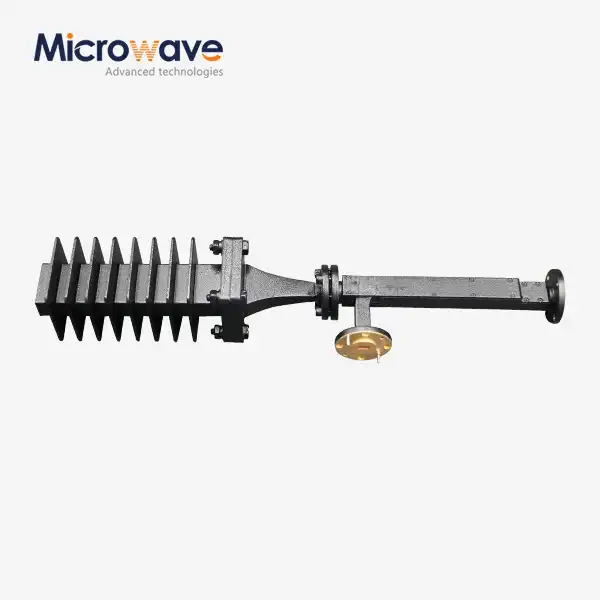 VIEW MOREWaveguide Fixed Attenuator
VIEW MOREWaveguide Fixed Attenuator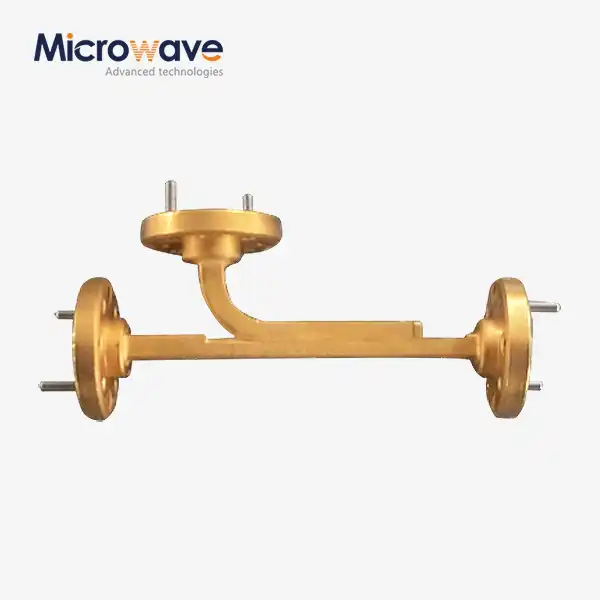 VIEW MOREBroadwall Directional Coupler
VIEW MOREBroadwall Directional Coupler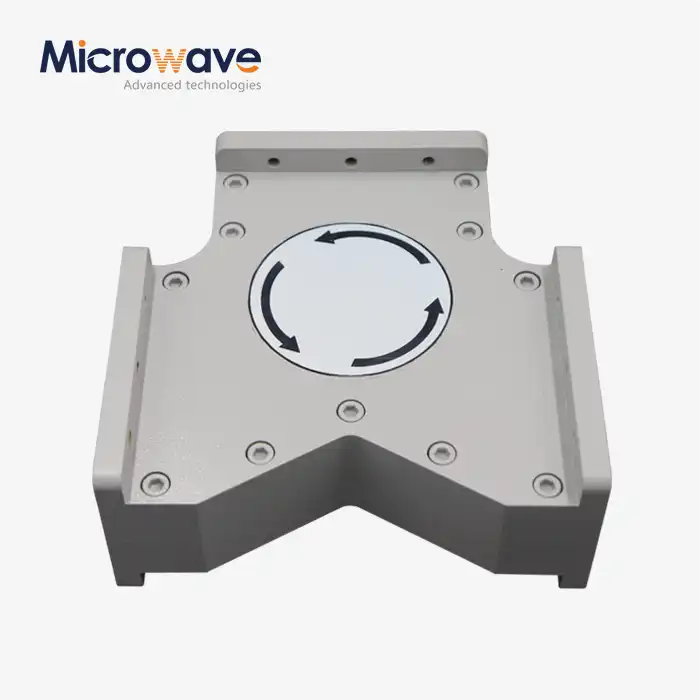 VIEW MOREHigh Power Waveguide Circulator
VIEW MOREHigh Power Waveguide Circulator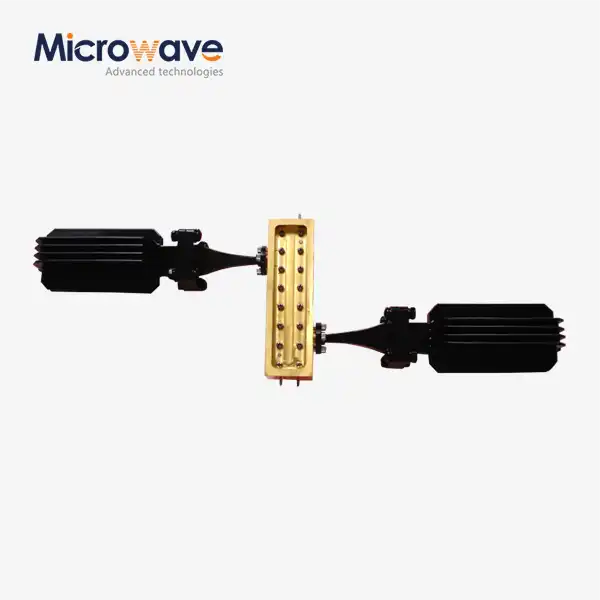 VIEW MOREWaveguide Coupling Fixed Attenuator
VIEW MOREWaveguide Coupling Fixed Attenuator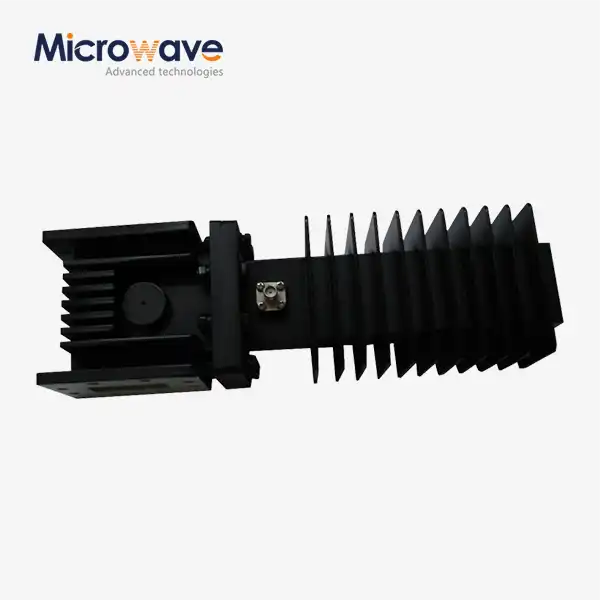 VIEW MOREHigh Power Waveguide Isolator
VIEW MOREHigh Power Waveguide Isolator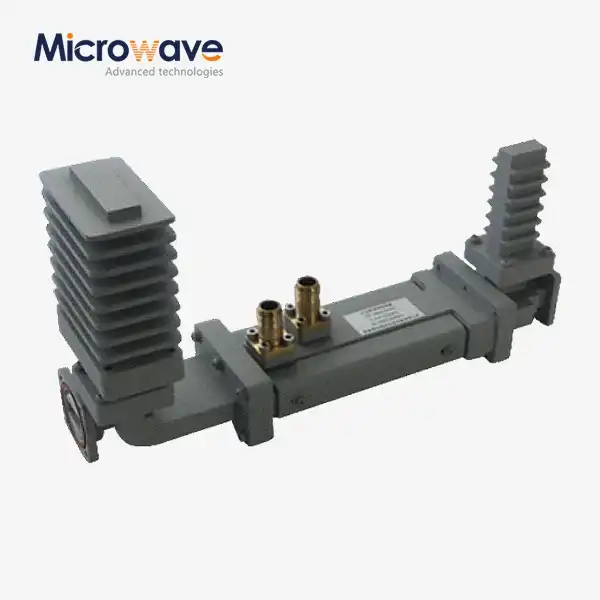 VIEW MOREHigh Power Waveguide Differential Phase Shift Isolator
VIEW MOREHigh Power Waveguide Differential Phase Shift Isolator VIEW MOREWG Band Stop Filter
VIEW MOREWG Band Stop Filter VIEW MOREWG Low Pass Filter
VIEW MOREWG Low Pass Filter




